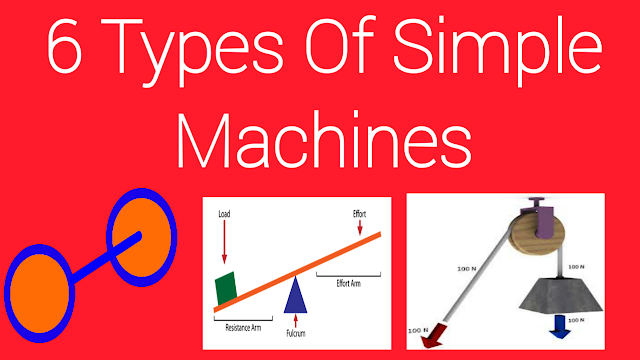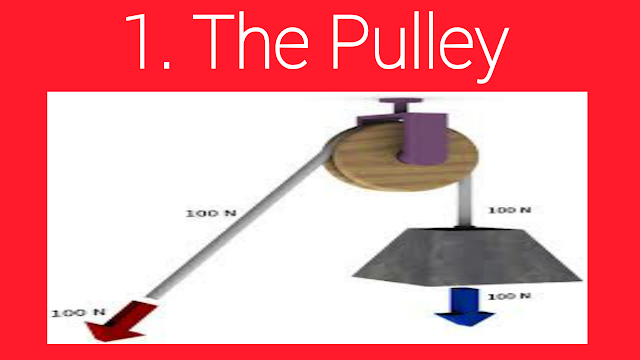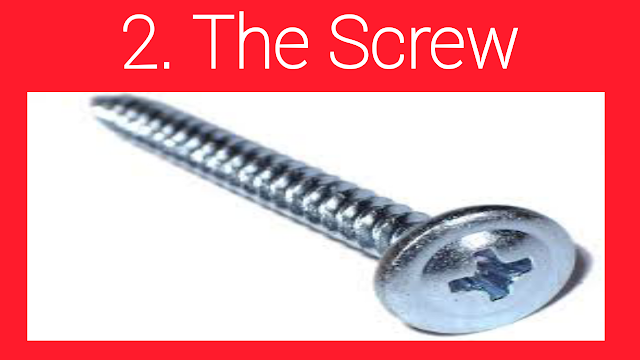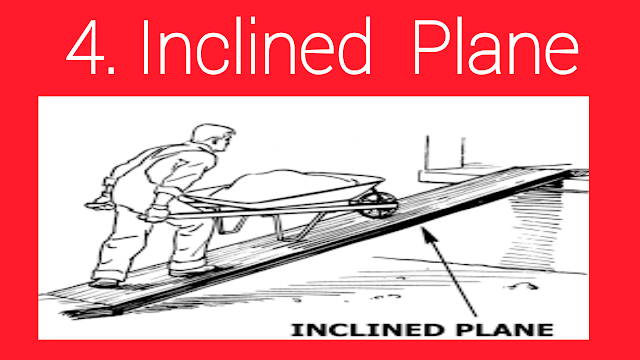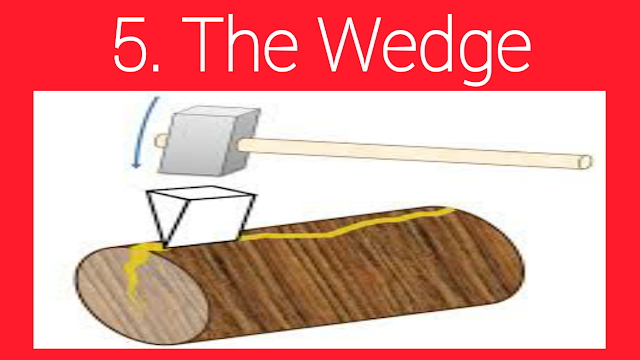A mechanical device that changes the direction or the magnitude of the force is a simple machine. A simple machine uses mechanical advantages to multiply the magnitude of the force. The working mechanism of a simple machine is very simple because it uses a single applied force to do work and it also works against a single load force. If we ignore the frictional losses, we know that the work done by the applied force is equal to the work done on the load force. The main advantage of a simple machine is that it increases the amount of the output force. To calculate the mechanical advantage of a simple machine, we have to find the ratio of the output force to the applied force. There are 6 types of simple machines.
Functions of Simple Machines
We have explained some essential functions of simple machines.
♦We can apply force at the convenient points of a simple machine. For example, it is more convenient for us to apply force on the pedals of a bicycle rather than directly applying force on the wheels of the bicycle.
♦ We can apply force in the convenient directions of a simple machine. For example, if we want to lift a bucket full of water directly, it is difficult for us. On the other hand, if we want to lift a bucket full of water by using a pulley system, it is convenient for us.
♦ We can lift large loads just by applying small efforts. We call it a force multiplier. For example, we use a jack system to lift cars and trucks.
♦ We can also change the speed of vehicles by using simple machines. This is a speed multiplier. For example, we use a gear system in automobiles to change the speed in automobiles.
Relevant Posts:
6 Types of Simple Machines
There are 6 types of simple machines. We have explained these 6 types of machines.
1. The Pulley
A pulley is the most common example of a simple machine and it consists of one or more wheels and these wheels loped with the rope to lift things easily. The basic concept of this machine is to multiply the force. If we want to lift heavy weights, we can attach engines and gears along with pulleys. The working mechanism of a pulley is also very simple. Its reason is that in a pulley system, you will have to wrap the cord around the wheel. When you rotate the wheel, the cord will move in either direction. By attaching a hook at one end of the cord, you can easily utilize the movement of the cord to raise and lower the weights. The simplest example of a pulley system is a flagpole. In a flagpole, we attach a rope to a wheel. By pulling one end of the rope, we can easily raise or lower the flag. There are three different types of pulleys. We have explained these three types of pulleys.
♦ Fixed Pulley
In a fixed pulley, we can attach a drum or wheel to a fixed spot. You can easily raise and lower the weight by applying force on the cord. The pulley system to raise and lower the buckets in a well is an essential example of the fixed pulley.
♦ Movable Pulley
In a movable pulley, a drum or wheel has no connection to a fixed spot. It means that if you are moving a load, the drum or wheel also moves along with the load. Constructional cranes and modern elevators are examples of movable pulleys.
♦ Compound Pulley System
A compound pulley system consists of a fixed pulley and a movable pulley. In a compound pulley system, you are not only raising and lowering the load but you are also changing the direction of the force. Theatre curtains and extension ladders are examples of the compound pulley system.
2. The Screw
A screw is also an essential type of six-classical simple machine and it can convert rotational motion into linear motion. The most common example of a screw is the cylindrical shaft. This cylindrical shaft has ridges at the outside and we call them threads. A screw can easily pass inside the hole of another object which has threads inside it. Like the other simple machines, a screw can also make our tasks easy. By converting rotational motion into linear motion, we can exert a large axial force on the load. We are using screws in our daily life to hold different objects together. We have explained some essential types of screws.
♦ Wood Screw
Wood screws are not made up of wood. Anyhow, wood screws are used to connect two solid wooden objects. Due to the sharp point, wood screws can easily dig into the wood.
♦ Machine Screws
Machine screws are helpful in machining applications. The most important type of machine screws is bolt screws. With the help of machine screws, we can easily hold heavy-duty metal objects together.
♦ Security Screw
We use security screws in security applications. Security screws don’t have heads like other screws for removal. To remove the security screw, we require a special tool like a spanner or a square driver.
♦ Sheet Metal Screw
Sheet metal screws are specially designed screws that are used to drive into the sheet metals. Anyhow, we can also use it to dig into other metals and wood. Sheet metal screws have threading at the top of the shank. Therefore, it is easy for us to dig these screws into the sheet metals.
3. Wheel & Axle
A wheel & axle is also an essential type of simple machine. This simple machine consists of a wheel that is attached to a smaller axle. These two parts of the simple machine rotate together. As a result, force is transferred from one part of the machine to the other part. To provide support to the axle, we use a hinge or a bearing, and a hinge or a bearing allows rotation in this simple machine. This simple machine can easily amplify the force. It means that a small force is applied at the axle and it rotates the large wheel. The most important examples of this simple machine are wheeled vehicles. With the help of this simple machine, we can also make our tasks easier because these vehicles move objects across distances.
4. Inclined Plane
A flat supporting surface that is tilted at an angle or whose one end is higher than the other is known as an inclined plane or a ramp. These inclined planes are helpful for us to raise or lower heavy loads over vertical obstacles. For example, we are using a ramp to load goods into a truck. With the help of this ramp, the pedestrian person can easily move up or down into the truck. If we are lifting a load without using an inclined plane, it requires lots of force. On the other hand, if we are moving the load by using an inclined surface, it requires less force.
5. The Wedge
A wedge is also known as a portable inclined plane. The shape of this simple machine is triangular. With the help of this simple machine, we can easily separate two objects or portions of an object. With the help of a wedge, we can easily lift an object or we can hold an object in its place. To use a wedge, we have to apply force at the blunt end of this simple machine and it converts this force on its inclined surfaces. A long wedge requires less force to lift the load than a short wedge. We are using wedges to lift the heavy loads. The blade of an axe is the simplest example of a wedge.
6. The Lever
A lever consists of a bar or a board that rests on a support. The support of the lever is known as the fulcrum. We apply a downward force at one of the levers and it transfers that force to the other end of the lever. On the other end of the lever, this force increases in the upward direction. Therefore, just by applying a small force, we can easily lift heavy objects. We are using levers for various purposes. The most important use of the levers is to lift heavy stones. In ancient times, human beings used these machines to raise water.
Important Terms Relevant to the Simple Machines
There are some terms that are relevant to simple machines. Therefore, when we are
learning 6 types of simple machines, we should also try to learn these important terms. These terms are explained below;
learning 6 types of simple machines, we should also try to learn these important terms. These terms are explained below;
♦ Load
As we know that a simple machine overcomes the resistive force. This resistive force is
a load. It is denoted by ‘L’.
a load. It is denoted by ‘L’.
♦ Effort
To overcome the load in a simple machine, we apply the external force. This force is effort. It is denoted by ‘E’.
♦ Mechanical Advantage
If we take the ratio of a load of a simple machine to its effort, it is known as the mechanical advantage of this machine. In mathematical form, the mechanical advantage of a simple machine has the following formula.
M.A = L/A
♦ Work Input
The energy that we supply to a simple machine is its work input.
♦ Work Output
The useful work that we do by a machine as a result of the input is work output.
♦ Efficiency
The ratio of the work output to the work input is the efficiency of the machine. In the mathematical form, the efficiency of a simple machine has the following formula.
Efficiency = Work Output / Work Input

